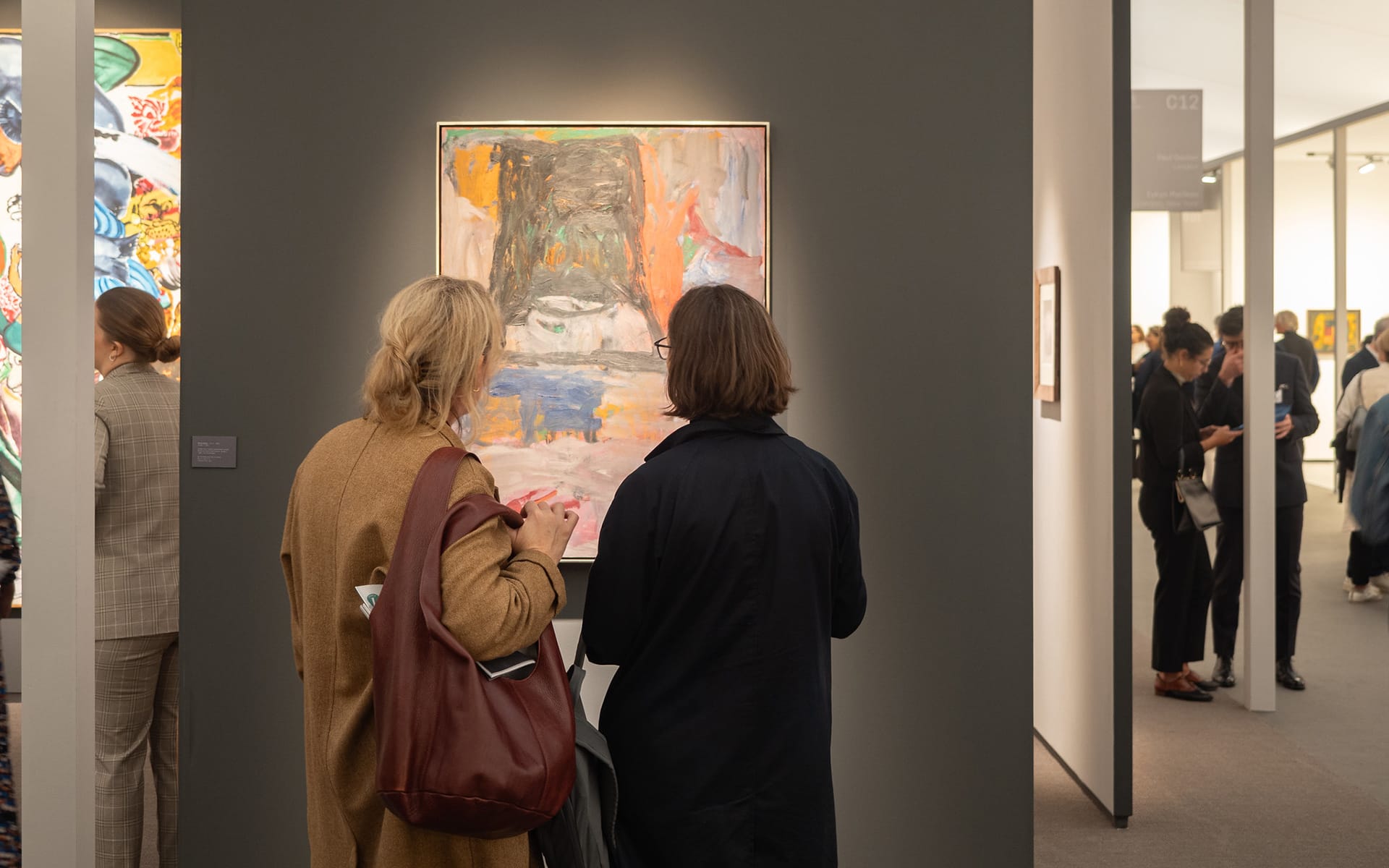See the Most Significant Historical Treasures at This Year’s Frieze Masters
Among the impressive offerings was a 68-million-year-old T-Rex skeleton and an early Rembrandt masterpiece

The historical breadth and overall sophistication of Frieze Masters in comparison to its contemporary counterpart, Frieze London, always provides a welcome palate cleanser amid all of the “new” on view during the English capital’s busiest art week. This year proves no exception, with a rich mix of ancient, Old Masters, modern and contemporary works, from literal dinosaurs to women artists at the forefront of early computer art, in addition to a new contemporary studio section.
“It is exciting to see increasing interest from contemporary artists to reinvent the classics through a meaningful dialogue,” says the fair’s director, Nathan Clements-Gillespie of this year’s fair. The event, which usually includes works ranging from classical antiquity to the 20th century, expanded its historical reach this year by a few millennia. A juvenile T-rex skeleton, dubbed Chomper for its well-preserved teeth, was by far the oldest object on view.


Found in Montana in 2019 and featured in the Discovery Channel series Dino Hunters, the dino dates to the Late Cretaceous period (68-66 million years ago), according to London’s David Aaron gallery, which presented it at the fair. At £16.5 million, it’s the most expensive juvenile T-rex ever known to come to market, and for good reason—juvenile specimens are exceedingly rare and only a few have ever been found; Chomper’s is the most complete skeleton to date.
At the other end of the historical spectrum is the fair’s new Studio section, which explores creative influences and their role in the career of five internationally renowned contemporary artists, including Arlene Shechet, Hyun-Sook Song, Lucia Laguna, Maggi Hambling, and Mona Hatoum. A highlight of the section is Hudson Valley-based sculptor Shechet’s 11 new colorful, amorphous sculptures, presented by Pace, alongside a medieval illuminated manuscript from which she drew inspiration for the works, brought by the London dealer Sam Fogg.

Clever curation that bridges past and present is “important,” says Sheena Wagstaff, the former head of the Metropolitan Museum of Art’s modern and contemporary department, who organized the Studio section. “[It] allows people to slow down and detach from the frenzy for a little while to take time to think and look. It is also exhilarating to see contemporary collectors’ genuine curiosity in the historic material.”
Despite the all-too-often male bent of art history, works by women and minority artists really come to the fore of this edition of Frieze Masters. The fair introduced a standalone Modern Women section this year, in collaboration with AWARE (Archive of Women Artists, Research and Exhibitions), which presents solo exhibitions of women artists who worked between 1880 and 1980. Among them are well known names like Faith Ringgold, on view at ACA Galleries, whose 1960s oil paintings tackle the complexities of gender and race in Civil Rights-era America, but also the lesser known Hungarian artist Vera Molnar. A pioneer of computer art, her works at Vintage Galèria’s booth date back as far as 1954 and center around her interest in algorithms.

The Lagos-based gallery kó offers an impressive survey of Nigerian modernist Ben Enwonwu’s paintings, accompanied by his wood and bronze sculptures, from the 1940s to the 1980s. Arguably the most influential African artist of the 20th century, a version of his iconic sculpture of Anyanwu, the Igbo sun god—which was given as a gift to the United Nations from Nigeria in 1966—is a standout at the booth.
“[Enwonwu] was a pioneer in developing a visual vocabulary for Nigerian modernism to speak on its own terms,” says the gallery’s founder, Kavita Chellaram. She adds that the artist was working at the same time as European and US contemporaries such as Henry Moore, Alberto Giacometti and Aaron Douglas. “It is meaningful to be showing Enwonwu at Frieze Masters, illuminating the relationship between his work and the international developments of modern and contemporary art.”


Undoubtedly one of the biggest attractions at this edition of Frieze Masters is Rembrandt’s early masterpiece, Blind Tobit with the Return of Tobias and the Archangel Raphael (c. 1628-29), brought by the Zurich-based Koetser gallery. The painting is one of the Dutch master’s most important younger Leiden-period works and had been held in a private American collection since 1978. Bearing a £24 million asking price, it was one of the most expensive works on offer.
Works by another 17th century Dutch painter, Frans Hals, also made an impact, especially in tandem with the acclaimed National Gallery retrospective dedicated to the artist. His Portrait of a 50 Year Old Man (1635), priced at £8.6 million at the Geneva-based gallery Saloman Lilian’s booth, hasn’t been seen publicly since 1911.

But there were also surprises by more modern masters. Robert Motherwell’s Hollow Men No. VI at Kasmin’s booth is eye-grabbing. The large, £2.6 million canvas—which has never been shown in the U.K. before—bears the artist’s signature repeated motif in black. But when it was first exhibited in 1988, the shapes were only rendered in charcoal over a yellow and ochre ground. The artist returned to the painting two years later with the dense black paint seen today; his proclivity for “reassessing” and reworking his compositions months and even years after he created them is a hallmark of the abstract expressionist’s practice.
Additionally, a stunning array of ceramic works at Guild Gallery’s booth made an impressive debut display for the gallery, which is exhibiting at Frieze for the first time. Including works by 20th century greats like Peter Voulkos and Toshiko Takaezu, as well as next-generation ceramic artists such as Peter Callas and Shozo Michikawa, the presentation explores how the British studio pottery movement influenced American and Japanese ceramic artists.
